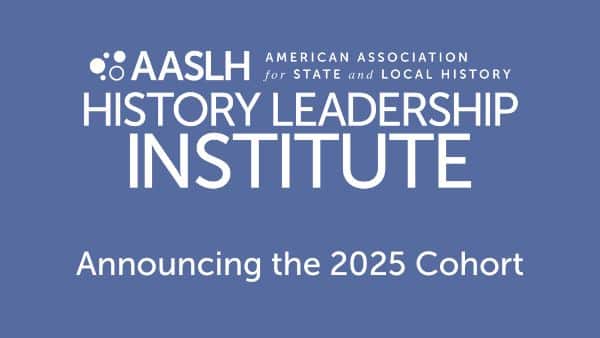As someone who has been a museum professional for the better part of 15 years, I periodically wonder how we ever made a move before the Internet. Fortunately for us, we do have access to an extraordinary range of online resources, but it can be hard to navigate them all.
To help, I’ve collected some web resources that might be of particular interest to history educators. I hope that my list might spark others to share their favorites, and that we can “pay it forward” in a way that leads to a great list of online resources that are applicable to what we do.
So here are some of my favorite online resources for history education. What are yours?
Blogs
One of the most wonderful things about using the Internet for history education is that it allows us to have conversations on our own time, often with people that we might never get a chance to meet. Blogs—like this one—can offer timely insights into what’s happening in our field right now.
Engaging Places
Engaging Place is about “building strong, lasting relationships between people and historic places.” Music to a history educator’s ears! A recent post about WebWise 2012—IMLS’s digital technologies conference—discussed a session about managing and using oral history collections. The session included a presentation about the Sound & Story Project of the Hudson Valley, an archive of stories from everyday people as a way of documenting the heritage of the Hudson River Valley. For those of us who work with oral histories, there is much to learn their efforts.
Museum 2.0
http://museumtwo.blogspot.com/
I’m sure that most history educators are already familiar with Nina Simon’s instructive and refreshing blog, Museum 2.0, which is a forum for examining participatory experiences in museums. Her book, The Participatory Museum, provides tremendous food for thought on how museums can—and should—engage our audiences. A Museum 2.0 post that inspired me to rethink audience evaluation was Put Down the Clipboard: Visitor Feedback as Participatory Activity. Kudos to anyone who can make assessment fun!
Websites
Teachinghistory.org
The Roy Rosenzweig Center for New Media at George Mason University has created a wonderful website of history resources aimed at K-12 educators (but it has tons of use for informal educators, too). I challenge you to check out the Tech for Teachers page and not find a digital resource that inspires you. It will be hard, I promise you….
DocsTeach
I work at The Sixth Floor Museum at Dealey Plaza and recently we invited colleagues from the National Archives Fort Worth, LBJ Presidential Library & Museum and the George W. Bush Presidential Library and Museum for a teacher workshop and public program, “Teaching about the Presidents”. It was a wonderful day, and I got a chance to hear a lot about the National Archives’ Docs Teach website of classroom activities based on primary documents from the 18th century to the present. Docs Teach is an excellent model for how technology can help teachers and students explore historical content.
History Pin and What Was There
Both History Pin and What Was There are sites that allow users to overlay historic photographs and memories onto Google Maps. This technology is being used by the University of Louisville Photographic Archives, National Archives and many other historical associations to show how our communities change and thrive.
TeacherTube
We all know that many schools districts limit YouTube access due to concerns about inappropriate content. Museums, historical societies and historic sites are using Teacher Tube as a place to share tours, orientation videos and student-generated projects. The Ohio Historical Society, for example, is using TeacherTube as a place for schools to view orientation videos and introduce other resources.






